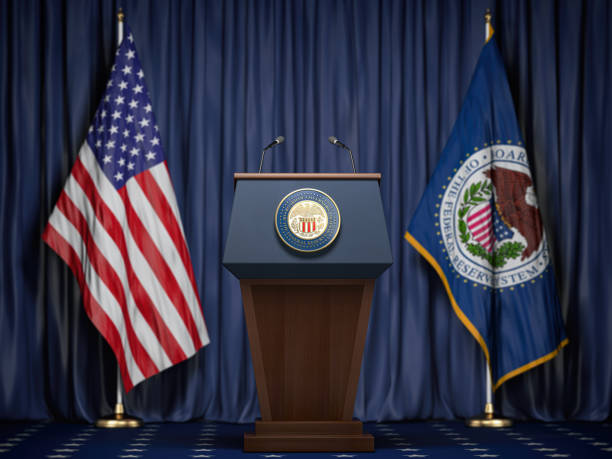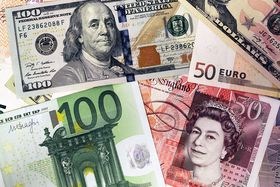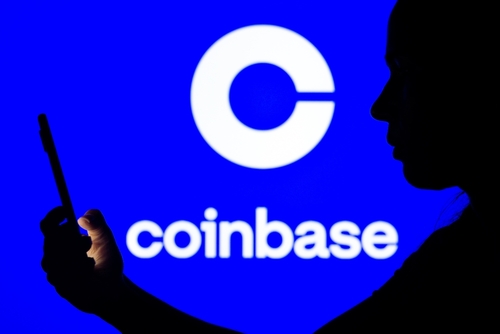[Reuters Analysis] Fed's reticence on rate cuts forces market to rethink outlook

- Traders back away from bets on interest rate cut in September
- Treasury yields and the dollar rise, while stocks retreat
- Positioning ahead of Fed decision may have amplified bond reaction
- Investors warn against reading too much into one-day market reaction
By Saqib Iqbal Ahmed and Davide Barbuscia
NEW YORK, July 30 (Reuters) - The Federal Reserve's decision to avoid signaling imminent rate cuts despite relentless political pressure underscores its prevailing caution and has forced investors to dial back expectations for an easing at the next policy meeting.
The Federal Open Market Committee held interest rates on Wednesday in a split decision that gave little indication of when borrowing costs might be lowered. It also drew dissent from two Fed governors, both appointees of President Donald Trump who agree with him that monetary policy is too tight.
The overnight policy rate controlled by the Fed remains in a 4.25%-4.50% range. The last rate cut was in December and the Fed hiked rates from March 2022 to July 2023 to fight inflation.
The lack of a clear signal that the Fed was warming to interest rate cuts as soon as the next meeting in September lifted Treasury yields and the dollar in late trade and turned stocks lower.
"I think the Fed has pushed out the probability of a rate cut," Sonu Varghese, global macro strategist at Carson Group.
"They're going to wait for more data, but more data means more time, and more time means rates are going to remain restrictive for a few more months," Varghese said.
Fed funds futures traders are pricing in a 46% probability of a rate cut by September, down from about 65% a day ago, according to the CME Group's FedWatch Tool. They are no longer pricing in two full 25 basis point cuts by year-end as they were in recent days.
Fed Chair Jerome Powell was careful to keep his options open on monetary policy. "We have made no decisions about September," he said in a press conference. He also noted there was still time to take in a wide range of data before the central bank next met in mid-September.
"There was some possibility that (Powell) would softly signal that a September rate cut is the base case, and (that it) would only not happen if the data didn't play out in a way that's consistent with that," said David Seif, chief economist for Developed Markets at Nomura in New York.
"I'd say he did not do that at all."
Bond yields climbed on Wednesday as Powell reiterated the economy was showing resilience despite interest rates remaining "modestly restrictive". Benchmark Treasury 10-year yields and two-year yields both rose by about two basis points after those remarks.
Investor positioning may have amplified the bond market reaction, said Jamie Patton, co-head of global rates at TCW.
"I think the market had gotten a bit ahead of itself thinking we already had enough data to justify a cut in September," said Patton, who remains bullish on short-term bonds due to expectations of imminent interest rate cuts.
Powell has come under intense pressure from the White House to lower interest rates, with President Trump regularly berating him for being too slow to lower borrowing costs.
Powell's reticence in guiding when the Fed may start cutting rates will leave investors to parse two more months' worth of inflation and employment data for the timing of policy easing, and put some pressure on small-cap stocks in the near term, investors said.
The Russell 2000 small-cap index .RUT, which had been outperforming the S&P 500 index on the day before Powell took the stage, finished the session down 0.47% against a 0.12% loss for the large-cap benchmark.
For the dollar, which has come under intense selling pressure this year, the Fed's relatively hawkish message gave some support, lifting the currency to a two-month high against a basket of peers. The dollar index =USD ended up 1%, leaving it down about 8% for the year.
"We still envision medium-term weakness for the USD, but in the near-term the risk profile is more two-way," BofA Global Research strategists said in a note.
Higher rates in the U.S. help boost the allure of the dollar relative to other developed market currencies.
"This patience from the Fed and strength of the U.S. economy coming through is putting a little bit of a pause to that dollar depreciation," Vishal Khanduja, head of broad markets fixed income at Morgan Stanley Investment Management, said.
Khanduja, however, warned against reading too much into the market's reaction to the Fed meeting.
"Overall, I thought they did not change their stance at all," he said.
Khanduja expects three to five cuts by the end of next year, though he sees the next two inflation releases as important.
"They're still going to be wait-and-see, still very convinced that inflation is going to be slightly higher in the next two prints," he said. "But they are still very convinced it's going to be a one-time bump."








